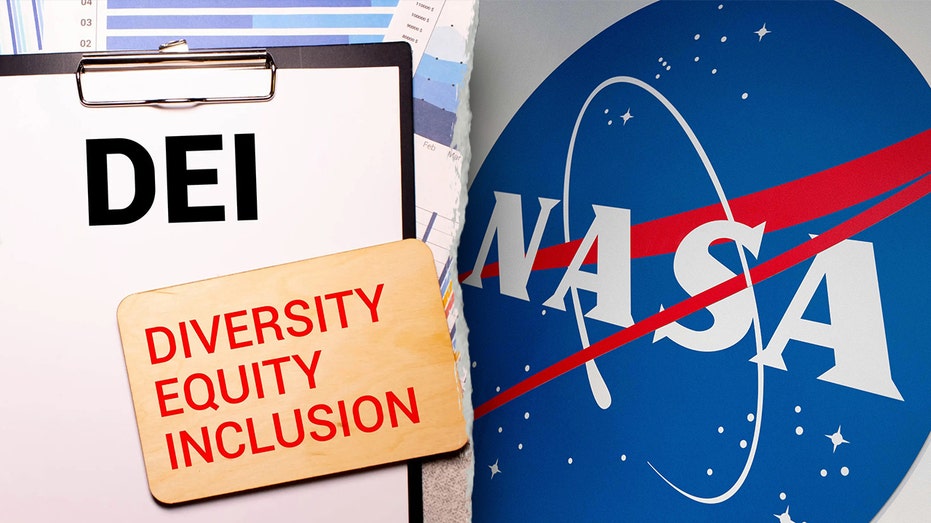The National Aeronautics and Space Administration (NASA) has come under scrutiny for its spending on Diversity, Equity, and Inclusion (DEI) initiatives during the Biden administration. According to a recent report from a watchdog group, the agency has allocated approximately $13 million towards these efforts while facing challenges in executing critical missions and maintaining quality control.
The watchdog organization highlighted that NASA’s emphasis on DEI has raised concerns about the potential impact on its core missions, which include advancing space exploration and scientific research. This significant financial commitment to social initiatives comes at a time when many argue that the agency should prioritize its foundational objectives.
NASA’s investment in DEI programs stems from a broader commitment across the federal government to promote inclusivity and diversity in various sectors. The Biden administration has made it a key pillar of its policy framework, encouraging federal agencies to prioritize these initiatives to reflect the nation’s demographics and to create equitable workplaces. However, the watchdog group’s report suggests that this focus may detract from NASA’s core functions.
Critics point out that in light of the agency’s ambitious goals, such as returning humans to the Moon through the Artemis program and planning a manned mission to Mars, the funds allocated to DEI may detract from essential scientific and engineering investments. While the administration has praised the importance of diversity in fostering innovation, the specifics of how these DEI initiatives have translated into tangible improvements at NASA are often debated.
NASA’s DEI initiatives include various programs aimed at improving representation and inclusion within the agency, as well as outreach efforts designed to inspire a new generation of scientists, engineers, and astronauts from diverse backgrounds. Initiatives range from scholarships and mentorship programs for minority students to inclusive hiring practices that seek to attract a wider array of talent to the organization.
Nonetheless, the watchdog group’s report raises alarms over critical issues within NASA’s operational capabilities. It suggests that during the period when DEI initiatives were ramped up, some mission failures and problems with quality controls in NASA’s operations went unaddressed. For example, issues related to the Space Launch System and its timelines were cited, with the agency missing critical deadlines that could have ramifications for deeper space exploration efforts.
This raises fundamental questions about how effectively NASA can balance its mission objectives with its commitment to diversity. The agency has a rich history of tackling complex issues, yet the scrutiny of its recent spending pattern implies that there may be a disconnect between its social objectives and its scientific goals.
Supporters of DEI initiatives argue that promoting diversity in STEM fields can lead to more innovative solutions to the challenges faced by NASA and other science-focused organizations. They argue that diverse teams bring various perspectives essential for problem-solving. Such viewpoints suggest that investing in DEI ultimately serves not just social good but also enhances NASA’s mission through a broader pool of ideas and innovations.
However, as the discussion continues, it is crucial for stakeholders to have a candid examination of whether the funds directed towards DEI have resulted in measurable enhancements at NASA. Proponents of stringent quality control and mission integrity assert that while DEI is essential, it should not come at the cost of mission success or operational effectiveness.
One aspect that critics emphasize is transparency. As federal taxpayer dollars are channeled into these initiatives, the need for clear reporting on the efficacy of such investments has never been more pressing. NASA must provide tangible results to justify its expenditures in DEI alongside ongoing accountability measures related to its operations and missions.
The debate surrounding NASA’s funding priorities mirrors broader discussions occurring nationwide about the balance between making workplaces more inclusive and ensuring that organizations remain focused on delivering on their promises. In the context of critical agencies like NASA, the implications are especially profound given the agency’s repairs and future goals regarding space exploration.
A viable pathway forward may involve a strategic reassessment of how DEI efforts can align with mission-critical objectives. Implementing DEI programs that directly contribute to enhancing NASA’s technological and exploratory capabilities could provide a framework that satisfies both diversity advocates and mission-focused stakeholders.
As NASA continues efforts to engage with the public and diversify its workforce, it faces the onus of demonstrating how these initiatives support its mission in meaningful ways. In the ever-evolving landscape of space exploration, ensuring that astronauts, scientists, and engineers are representative of the nation’s diversity remains critical but should accompany on-the-ground results that align with NASA’s stipulations.
The need for such accountability is underscored as the agency prepares for several upcoming missions that require stringent adherence to timelines, budgets, and safety standards. High-profile missions, such as the upcoming Artemis I unmanned flight around the Moon and the planned Artemis II crewed mission, must succeed to reinvigorate public investment and trust in NASA’s objectives.
In conclusion, the allocation of $13 million by NASA towards Diversity, Equity, and Inclusion under the Biden administration has sparked a mix of support and criticism. While many advocate for the value of diversity in innovation, the implications of such spending on NASA’s operational integrity and mission success are subjects of growing concern. There exists a pressing need for the agency to clarify how DEI initiatives intertwine with its ambitions for future explorations beyond Earth. As the landscape of NASA continues to evolve, ensuring that all efforts contribute toward advancing space exploration remains paramount.
































